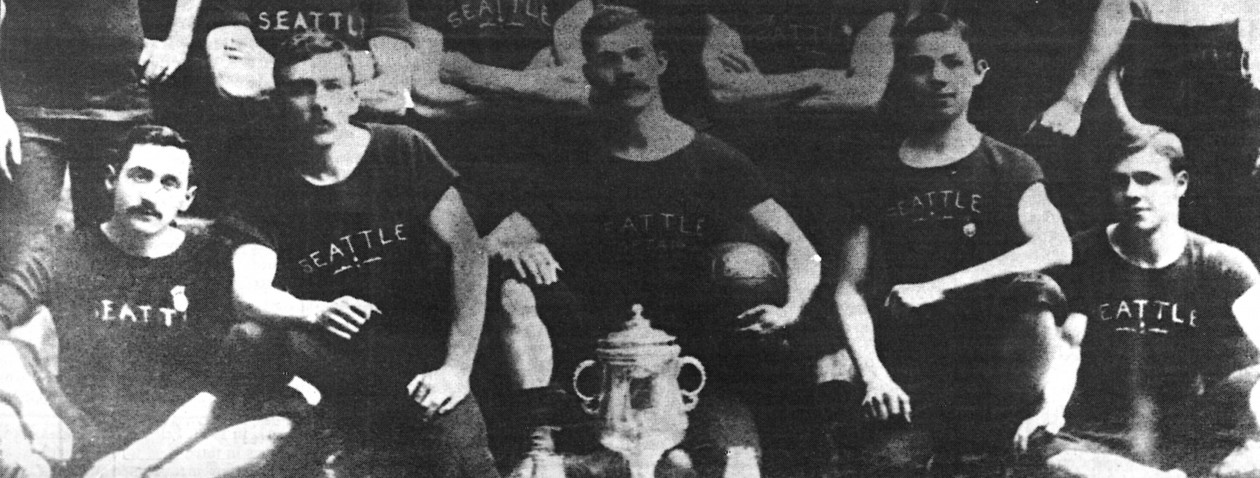That expectation, that belief, is very much grounded in history and the U.S. National Team’s conquests early on. The reason we truly believe we will win is because, early on, we did.

In 1991 Anson Dorrance took a young team to China and promptly won the first World Cup. A few years later they won the first Olympic Games and in 1999, of course, the USWNT doubled their number of World Cup stars at the Rose Bowl.
Dorrance has long since relinquished the reins of the national team. Yet he is still going strong, still churning out championship teams at Chapel Hill. North Carolina’s women’s soccer dynasty counts 22 national titles in his 29 years.
While in the Seattle area for a special session at Northwest Soccer Camp, he took time to share why Washington state played such a prominent role in building that winning belief, both for Carolina and the National Team.
“What people don’t understand now is that the highest level of the adult women’s game in this country, was played in this Seattle-Tacoma area,” says Dorrance. “If you know the history of the senior game in the U.S., you would say many of the top coaches and players for the men came from St. Louis. Well, back in the day, the women’s game went through Seattle and this area.”

The first National Team coach was Seattle’s Mike Ryan. Dorrance had wanted the job, but Ryan got the nod on the strength of his teams winning three consecutive club championships.
“I remember the great teams he had and the great athletes he coached,” Dorrance says. “It was a dynasty.”
With relatively few women’s collegiate programs out West, let alone in Washington, Dorrance began recruiting the state’s top players to Carolina, beginning with Dori Kovanen in 1981 and Joan Dunlap in 1984. And when Dorrance succeeded Ryan as coach in 1986 he inherited a squad whose nucleus was rooted in Washington.
At one point in his first years at the helm, Dorrance fielded a USWNT lineup featuring six Washingtonians, and that after shedding Ryan’s top protégé.
“Sharon McMurtry was one of his superstars; just classy with a remarkable skill set,” Dorrance recalls. “If she had been young enough, she would’ve been one of the players in that ’91 World Cup. Unfortunately a lot of (Ryan’s) players peaked a little too early to be dominant in 1991.”

Still, four players from the Seattle area made this final cut for China: Michelle Akers, Amy Allmann, Lori Henry and Shannon Higgins. Henry and Higgins had starred for UNC while Akers and Allmann attended then-powerhouse Central Florida. Henry was a captain for both the Tar Heels and National Team. Akers won the first Hermann Award (the Heisman of college soccer) for women in 1988 and Higgins followed suit a year later.
“(Seattle) was the women’s soccer hotbed, and these were absolutely elite players,” exclaims Dorrance. “Four players from Washington were on that roster, certainly one of the most well represented areas in the U.S., and two players among the best in the country were on that world championship team.”
Akers would finish as winner of the tournament’s Golden Boot, scoring 10 goals. She struck for both goals in the final versus Norway, each set-up by Higgins passes. Afterward, outside the locker room in Guangzhou, Washington’s finest posed for a group photo. It would be the final National Team action for Allmann, Henry and Higgins.

“(Higgins) knew how to hurt you when she got the ball. I loved coaching her,” says Dorrance, favorably comparing Morgan Brian to Higgins’ “tactical genius.” “One of the smartest, most tactical players I ever trained.,” he adds.
Higgins was then the newly-named George Washington coach and would later take over at Maryland. In 2002 she became the third female player inducted into the National Soccer Hall of Fame.
Of course Akers would battle on for nearly nine more years. She starred again on the victorious Olympic team and was one of the top three players at the ‘99 World Cup. She was inducted into the hall of fame in 2004 and FIFA pronounced Akers co-player of the century.
“There’s no one like Akers,” asserts Dorrance, adding it would take an “incredible genetic freak” to replicate all that Akers was to the game.

Originally an attacking midfielder, he moved her to striker to find a spot for a young Julie Foudy. Later, Tony DiCicco deployed her in defensive midfield.
“She was absolutely brilliant in every position,” judges Dorrance, who says no one on the current U.S. team approaches Akers in impact. “A player without a weakness.”
“One of the best center forwards of all-time. One of the top attacking center midfielders of all-time and one of the top defensive midfielders of all-time. And if she’d moved back, she’d be one of the great backs of all time. She was complete, and she was off the charts in every respect. “

